If you’ve known the enchantment of fireflies blinking through a summer evening, perhaps you’ve wondered where they come from, why they blink, and where they go when the sun comes up. Have you also wished that more of them would light up your own backyard? Here are a few tips!
Although we only see them in summer, autumn is a critical time of year in the life of these magical creatures. What we do in our landscapes in the fall determines the health and well-being of the firefly population for the following summer.
There are more than 150 species of fireflies in North America. In the Northeast, the most common are in the Photinus group, which includes about 15 different species. To find their own species in the dark, fireflies have adapted a highly specialized method of communication. The blinking light display that so charms humans is part of the firefly mating ritual!
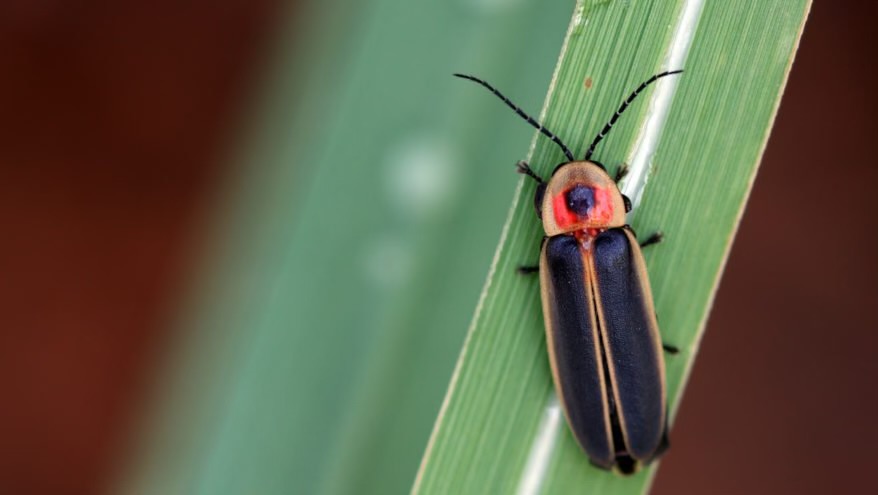
Each species of firefly has its own distinctive flash pattern, like a message in Morse code, to signal potential mates. Depending upon the species, flashes may be single or in multiples, short or long, and spaced at specific intervals. The characteristic pattern helps each species find its mates. The males fly around blinking their distinctive pattern. Females rest on the ground, or on low vegetation, and answer by flashing back at the right time. In this way, the female chooses her mate – if she doesn’t flash back to a passing male, he can’t find her in the dark!
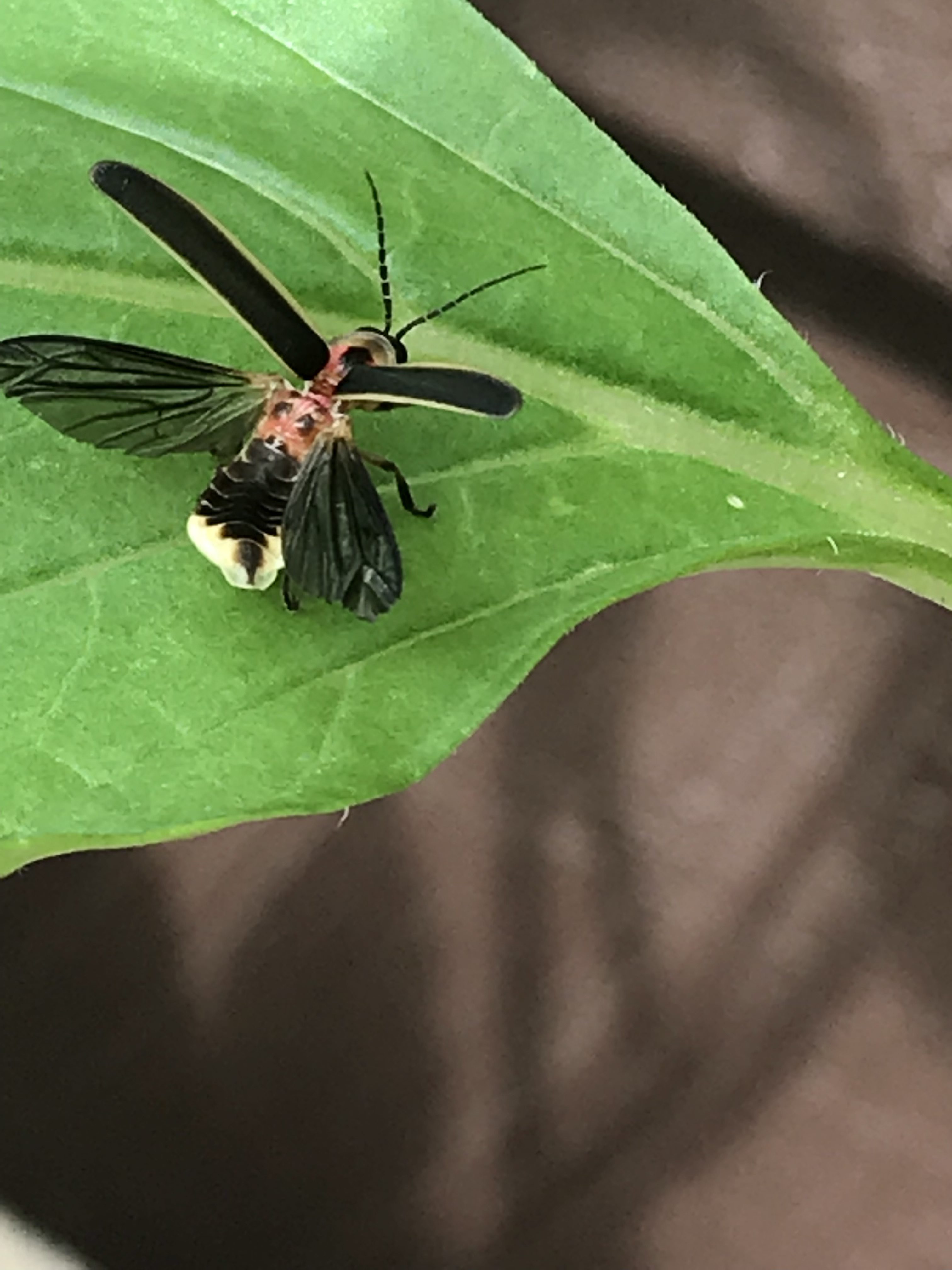
The flashing light, or bioluminescence, is caused by a chemical reaction in the insect’s lower abdomen, and varies in color from species to species. The “lantern” on the male is larger than on the female, usually covering two segments of the body rather than just one in females.
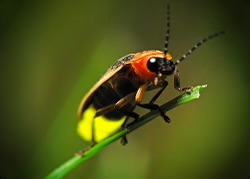
Because fireflies use their flashing light pattern to find mates, outdoor landscape lighting can be a big problem. Darkness is necessary for fireflies to find their mates, and artificial lights confuse them, interfering with the ancient mating ritual. So, you can help just by adjusting your yard lights to be sure it’s dark when fireflies are active in summer. Use only motion-activated lights, or low-wattage yellow or red lights, and use timers to turn lights off completely at the earliest hour possible. Not only does a dark yard help fireflies find mates, it also makes their magical display easier for you to see and enjoy.
So, after a romantic night, where do fireflies sleep?
Adult fireflies spend daylight hours resting at ground level in vegetation where there is humidity and cover. At dusk, you can see them rise up from the low vegetation and drift higher as the sky darkens. A few days after mating, the female lays fertilized eggs on or just under the surface of the ground in the same damp areas where she has been hiding during the day.
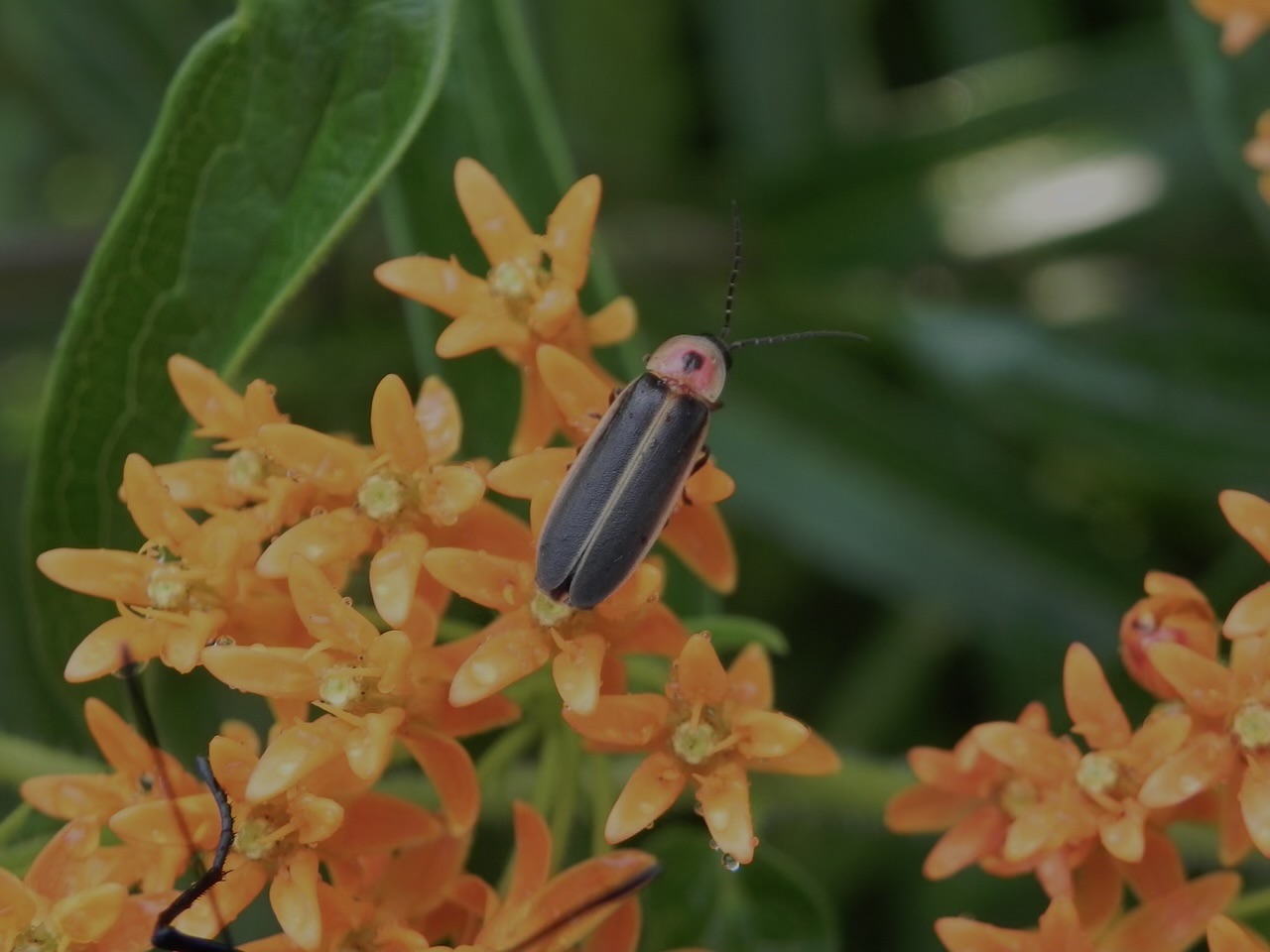
So, ground and soil conditions are critical for firefly populations. Avoid disturbing the ground by mowing, or using high-powered leaf blowers, or spraying pesticide. If the female firefly finds a good spot, under trees or shrubs, or in a patch of native perennials, in tall grass, in leaf litter, or under a loose brush pile where her eggs won’t be disturbed, then the eggs will hatch in two to four weeks, emerging as hungry larvae.
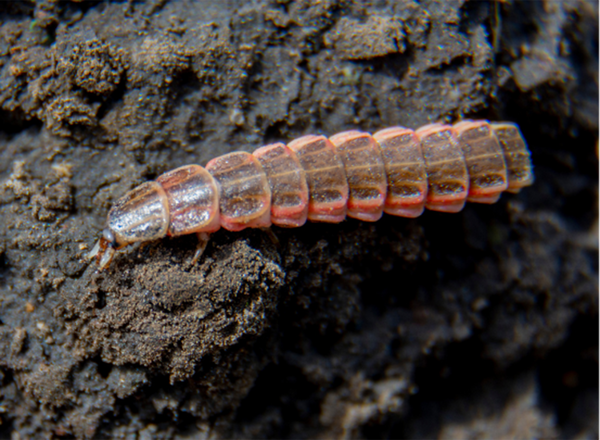
find and feed on multiple garden pests.
Photo: Ken Johnson, University of Illinois Extension
Firefly larvae don’t look anything at all like the adults we recognize, (though the larvae do glow in the dark!). The larvae feed until the end of summer on soft-bodied insects, including slugs, snails, worms, other garden pests, and even mosquitos — which makes fireflies extremely beneficial insects! Then in the fall, the larvae must find a safe place to hibernate for the winter.
And that is why our fall landscape practices are critical. If we insist on keeping very tidy yards, where every fallen leaf has been blown and bagged for removal, future fireflies hiding as larvae in the leaf litter, or in soil protected by those leaves, will be lost. If we cut our flower beds to the ground and send away the dead stems and leaves, not only fireflies, but also many species of butterflies, moths, and native bees will be doomed with no safe place to hibernate for the winter. Cutting ornamental grasses to the ground, and mowing lawns short before winter, also dries out the damp ground where firefly larvae hibernate, reducing their chances of surviving until spring.
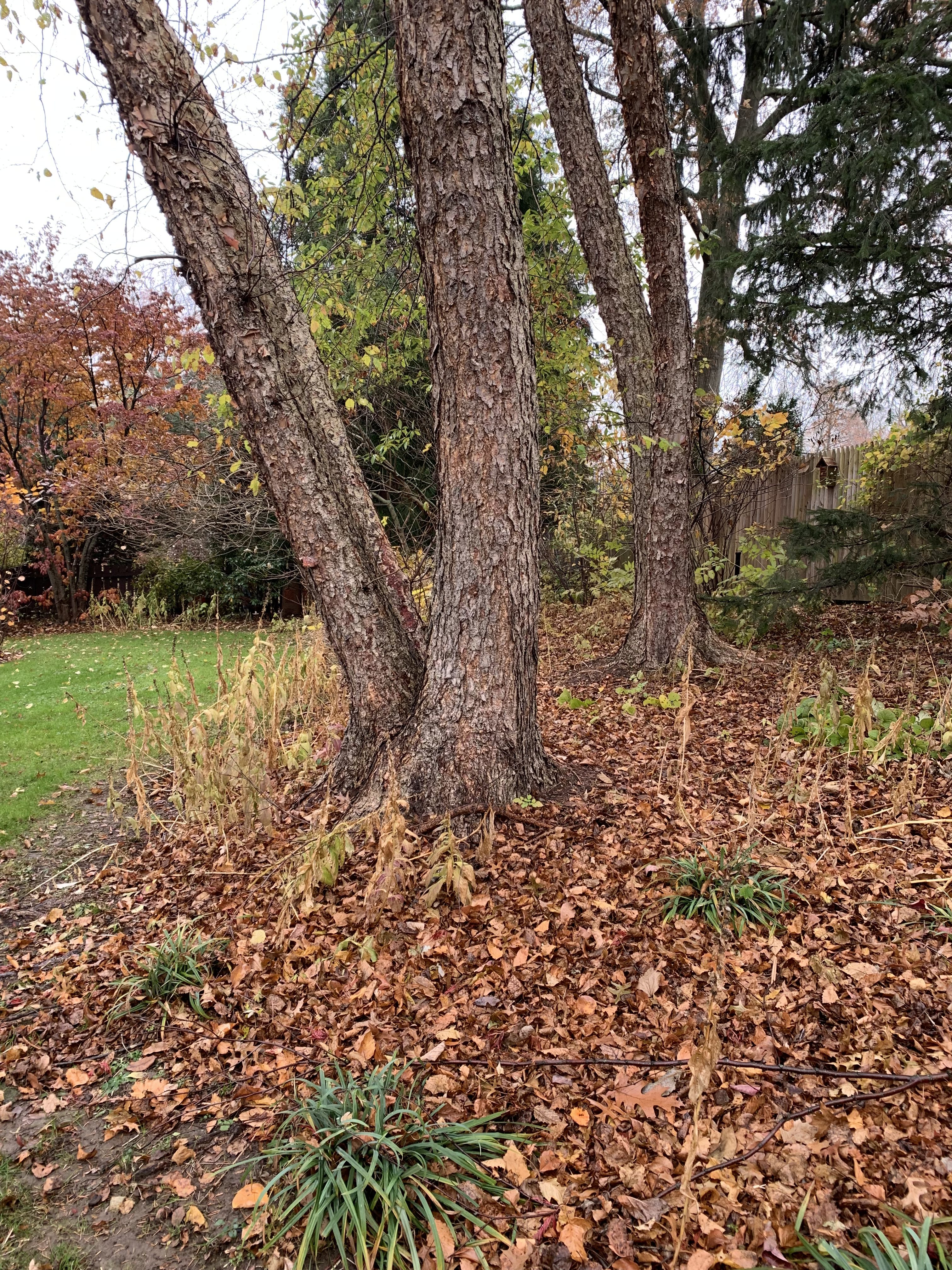
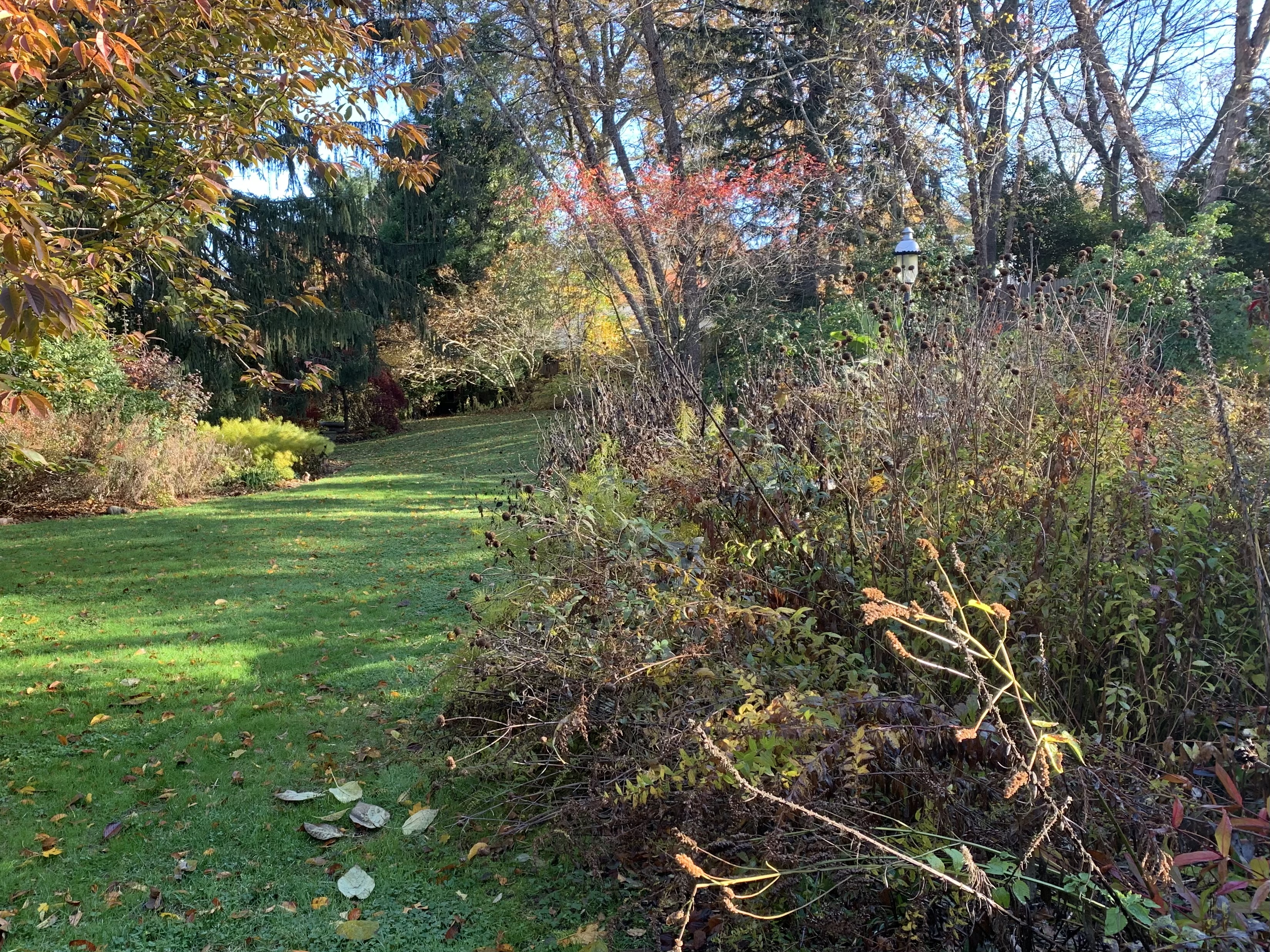
If firefly larvae overwinter safely, and are not destroyed by overly-aggressive spring garden clean-ups, they will emerge hungry and ready to hunt various garden pests well into summer, when they finally pupate, becoming adult fireflies. If allowed to mature in safe habitat, fireflies will again delight children of all ages when summer arrives.
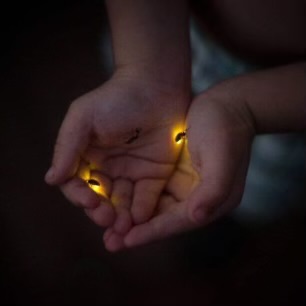
Photo: Bernheim Forest and Arboretum
Though catching fireflies may be one of the chief joys of childhood, it is best to use a net to avoid hurting the insects’ soft bodies. Don’t squeeze their abdomens, and be sure there is no insect repellant on your hands. You can put fireflies in a jar for an hour or two to observe them more closely, but add a bit of wet paper towel to keep the humidity up, and be sure to release them where you found them well before morning. They will not survive long in captivity.
Firefly populations are decreasing across the US, but you can help by following many of the same practices that protect pollinators:
- Provide safe habitat by planting trees, shrubs, grasses, and flowering perennials in parts of your yard, and allowing leaves and dead vegetation to stay there – especially over winter and into spring.
- Do not use pesticide on lawns, and avoid poisons meant for slugs and snails. Do not spray for ticks or mosquitos under shrubs and trees where fireflies hide. So-called “natural” and “organic” insecticides are still lethal for fireflies, butterflies, moths, and bees.
- Reduce or eliminate unnecessary outdoor lighting during the summer when fireflies and moths are active. Use motion-activated lights or timers, and aim lights downward wherever possible.
By taking these simple steps, we can protect the magic of fireflies on sultry summer nights for many generations to come.
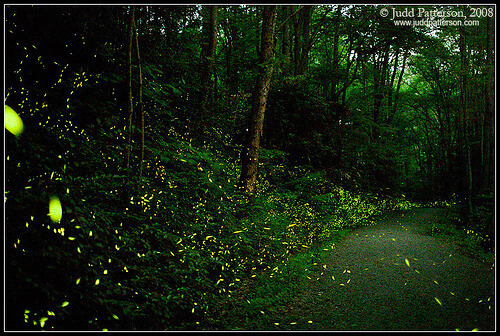

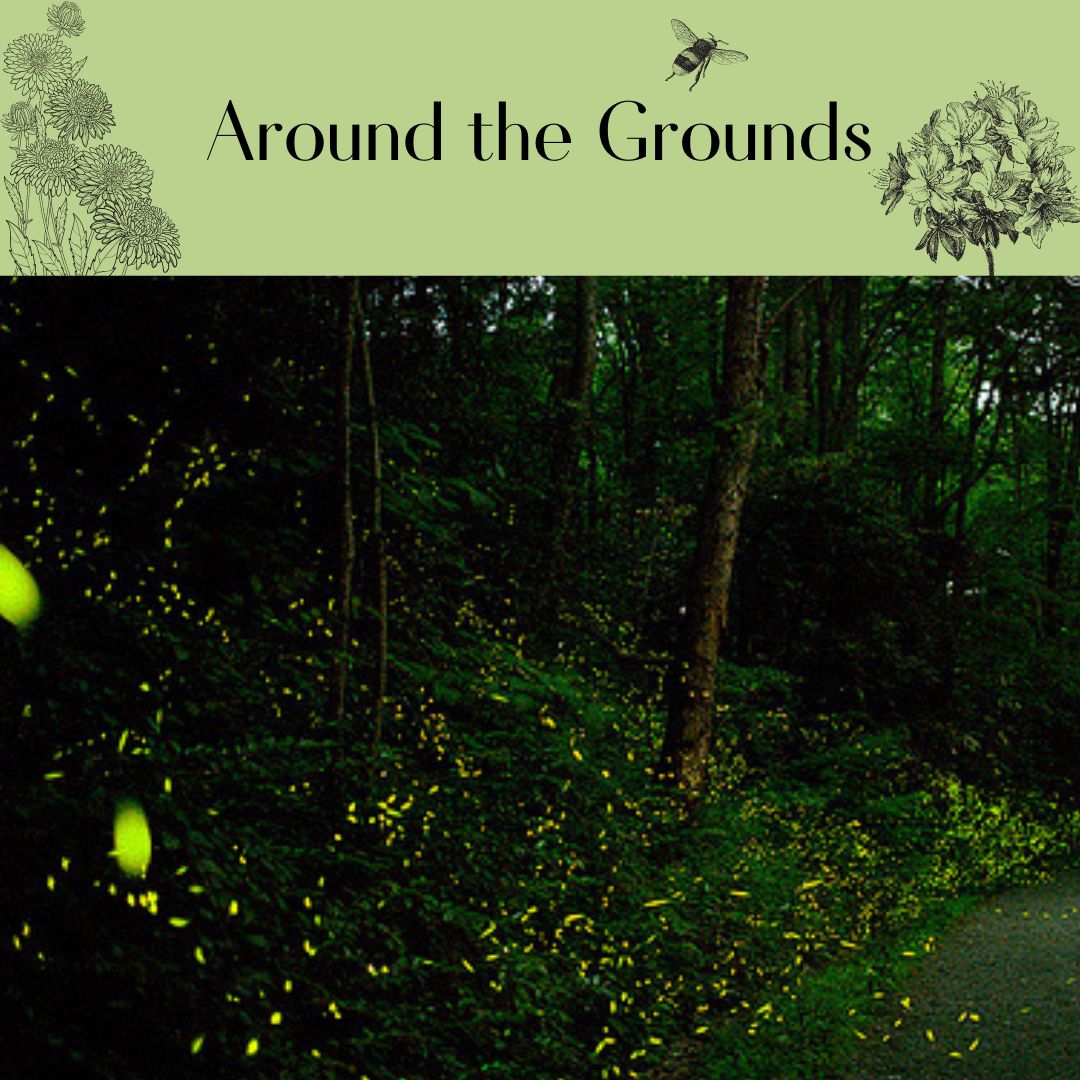
This summer i saw open fields of these wonderful insects at night- so so many, like stars in the night. Brought tears to my eyes, it was that special.
I remember magical scenes like that from my youth in the Midwest. Where did you see them, Lynne?
Love the outdoor lighting tips – super easy to do and so important!
Same tips are a big help to moths and birds as well!
As always, great and interesting info. I love these posts!
Thanks, Elaine!